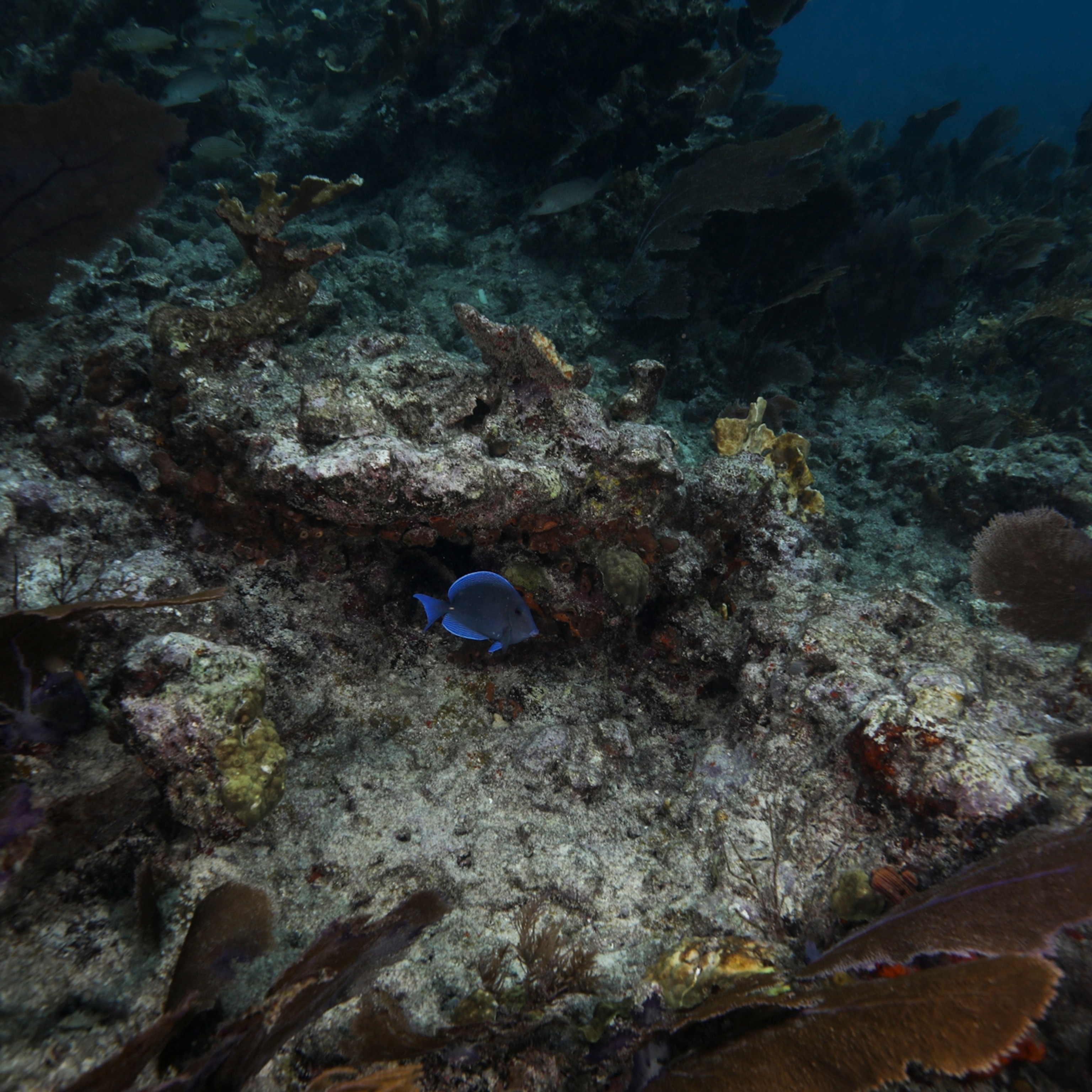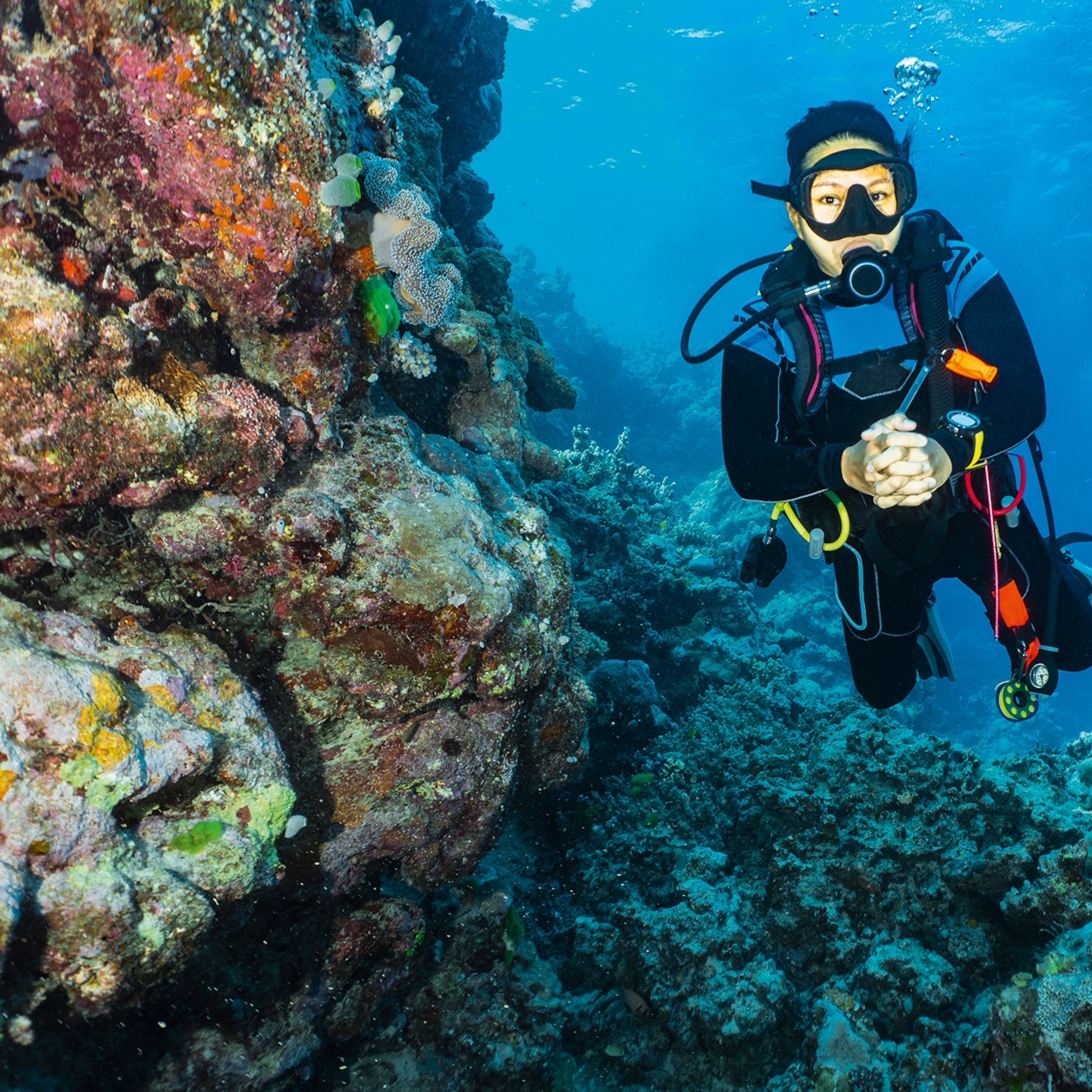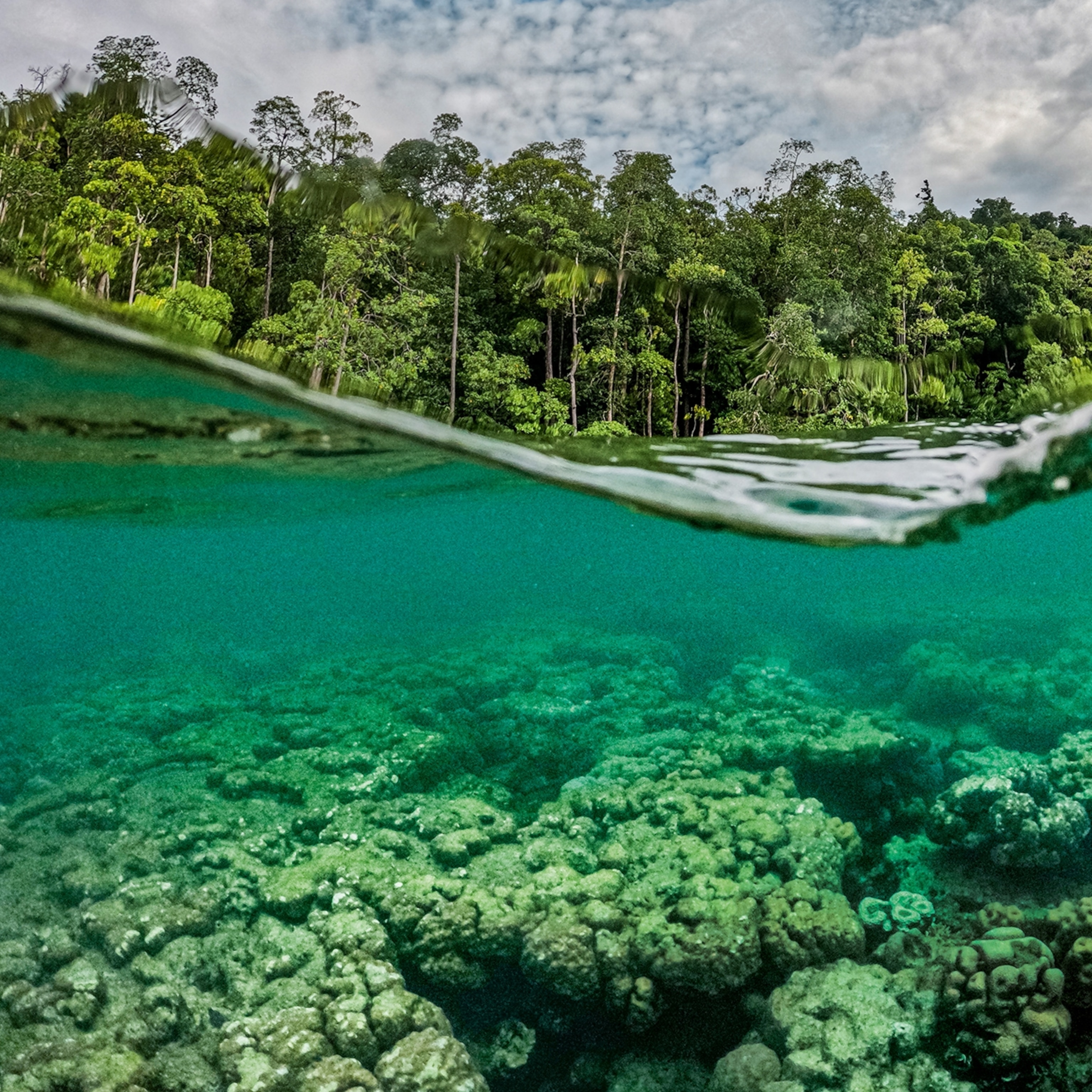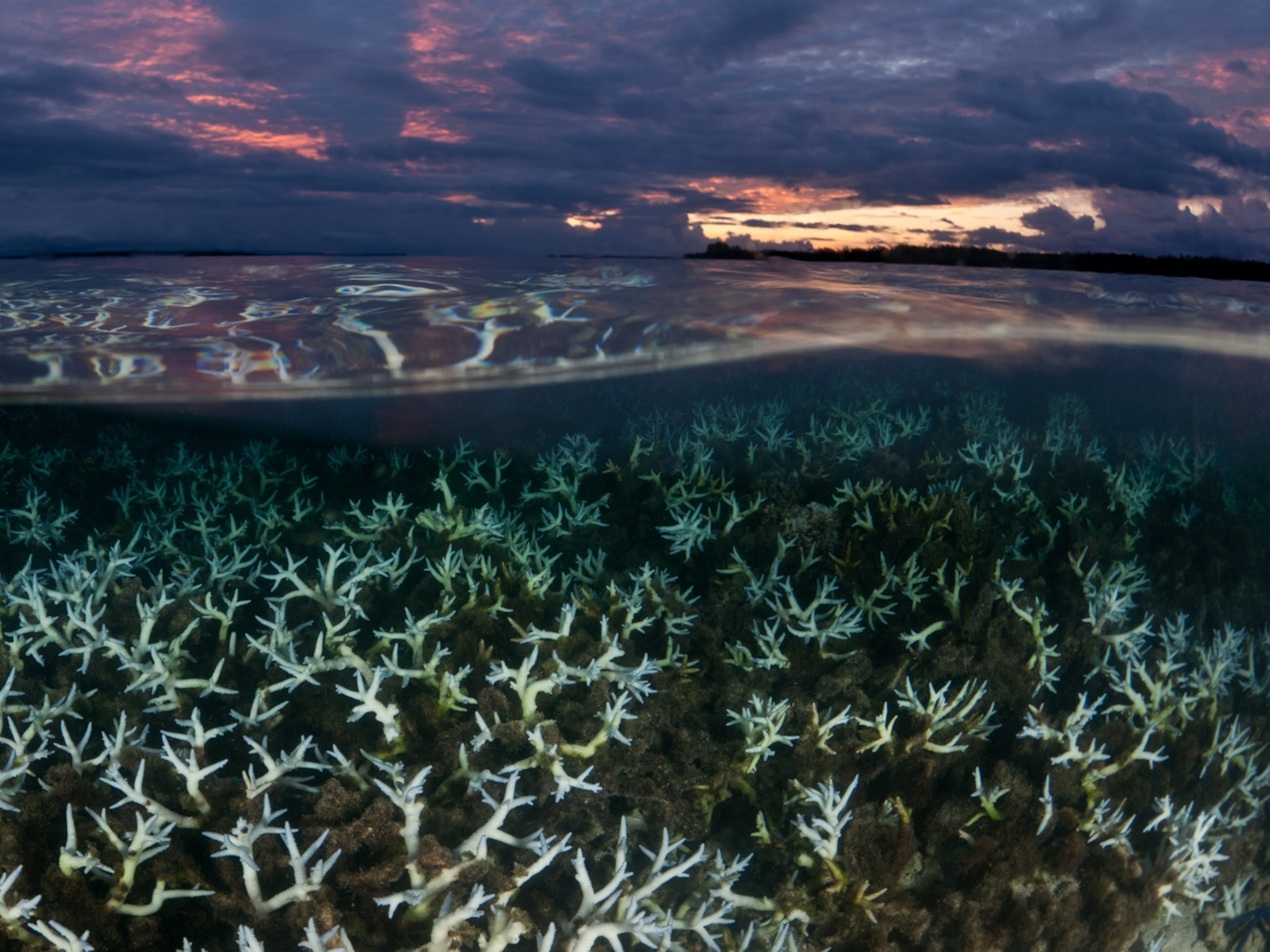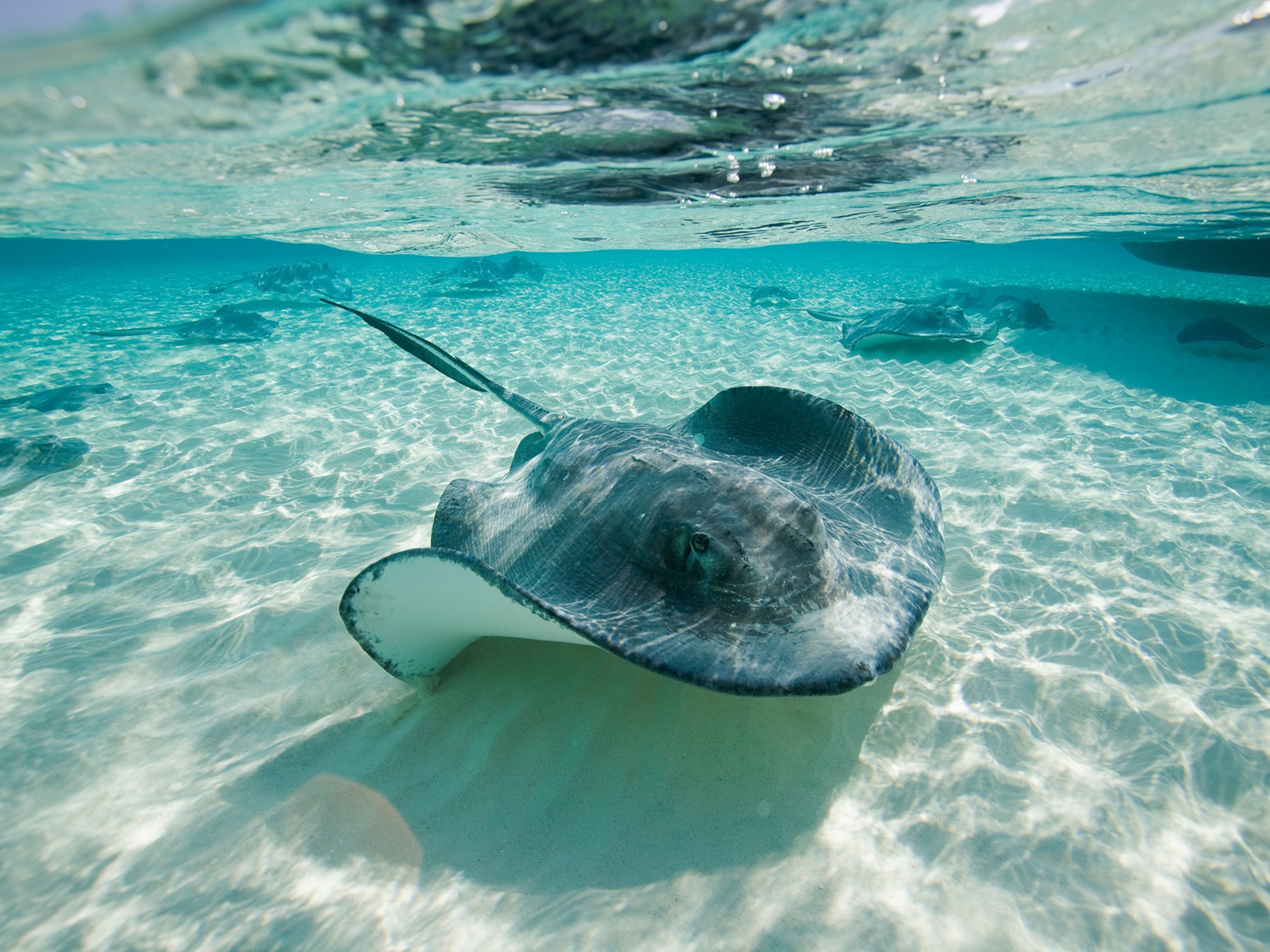Once devastated, these Pacific reefs have seen an amazing rebirth
Protected corals around the southern Line Islands have recovered with shocking speed from the heat of the 2015-2016 El Niño.
The most astonishing and heartening coral rebirth the world has ever seen came to light recently.
To understand how it happened, you have to go back to April 2009.
That’s when I assembled and led a team of young, passionate marine biologists on our first expedition to the remote and uninhabited southern Line Islands, which belong to Kiribati, in the central Pacific. The five islands are the tips of ancient volcanoes that rose to the surface between 85 million and 70 million years ago, forming an underwater mountain ridge that crosses the Equator—the “line” in their name.

Our goal was to conduct the first scientific surveys of marine life around the islands. We knew almost nothing about this archipelago. It took us longer to get there by plane and ship than it took the Apollo astronauts to reach the moon. On ocean maps, the water around the islands was a featureless blue. We didn’t know what we were going to find under the surface.
What we found was paradise: reefs untouched by humans, with a thriving coral jungle full of large fish. Sharks and other top predators were so abundant that their total biomass outweighed that of their prey. On every dive we saw endangered species—such as the enormous Napoleon wrasse, up to six feet long. The southern Line Islands changed our understanding of coral reefs. Scientists like me had no idea what pristine reefs looked like.
The abundance of fish around the islands was easily explained: Because of their remoteness, about 2,000 miles south of Hawaii, there was no fishing. But would the reefs also be able to withstand global warming? In 1997-98 an intense El Niño, a cyclical warming event, had caused coral die-offs across the Pacific. The corals in the southern Line Islands, though, were in such good shape in 2009 that we believed they might be able to stand up to further ocean warming—provided they were shielded from other human assaults.
Informed by our findings, the Kiribati government announced plans to protect its waters around the islands out to 12 nautical miles from fishing and other extractive activities. At Pristine Seas, the project I direct, we rejoiced. We thought these reefs had been saved forever.
Then came a calamity.

In 2015 and 2016, the strongest El Niño ever recorded moved across the Pacific. Corals die when the ocean temperature exceeds a certain threshold for too long; scientists measure a reef’s exposure to such danger in degree heating weeks (DHWs).
During the 1997-98 El Niño, the southern Line Islands had suffered four DHWs. The 2015-16 event, coming on top of another two decades of global warming, pushed the DHW count to 15. The jump surprised even those of us who are well aware of the risk of ocean warming.
Along the northern Great Barrier Reef in Australia, reefs were monitored in real time by scientists, who found that two-thirds of the corals had died. But what happened to the pristine reefs in the southern Line Islands? I was impatient to know, but all I could do was worry: Very few people ever go there.
Then in August 2017 an incredible opportunity arose. Our Pristine Seas partner and board member Ted Waitt finished an expedition in French Polynesia and offered us his research vessel for two weeks. I was committed elsewhere, but my colleague Stuart Sandin at Scripps Institution of Oceanography was available. He and his team had been part of our 2009 expedition and had returned to the Line Islands in 2013. They were ideally placed to repeat the coral surveys, one year after the warming event.
What they saw was what we had feared. As soon as he was back online, Stuart told me: Half the corals had died. My heart sank. But as he gave me more details, the horrible news turned into questions—and eventually, possibilities.
Most of the dead belonged to one genus, the cauliflower coral Pocillopora; just one living colony was found. Though Acropora were also hit hard, no other types had suffered as much: They had all survived 15 DHWs. That meant that in the southern Line Islands, at least, all those corals were resistant to strong warming. The next question was, would Pocillopora recover, and Acropora too? Would they prove resilient?
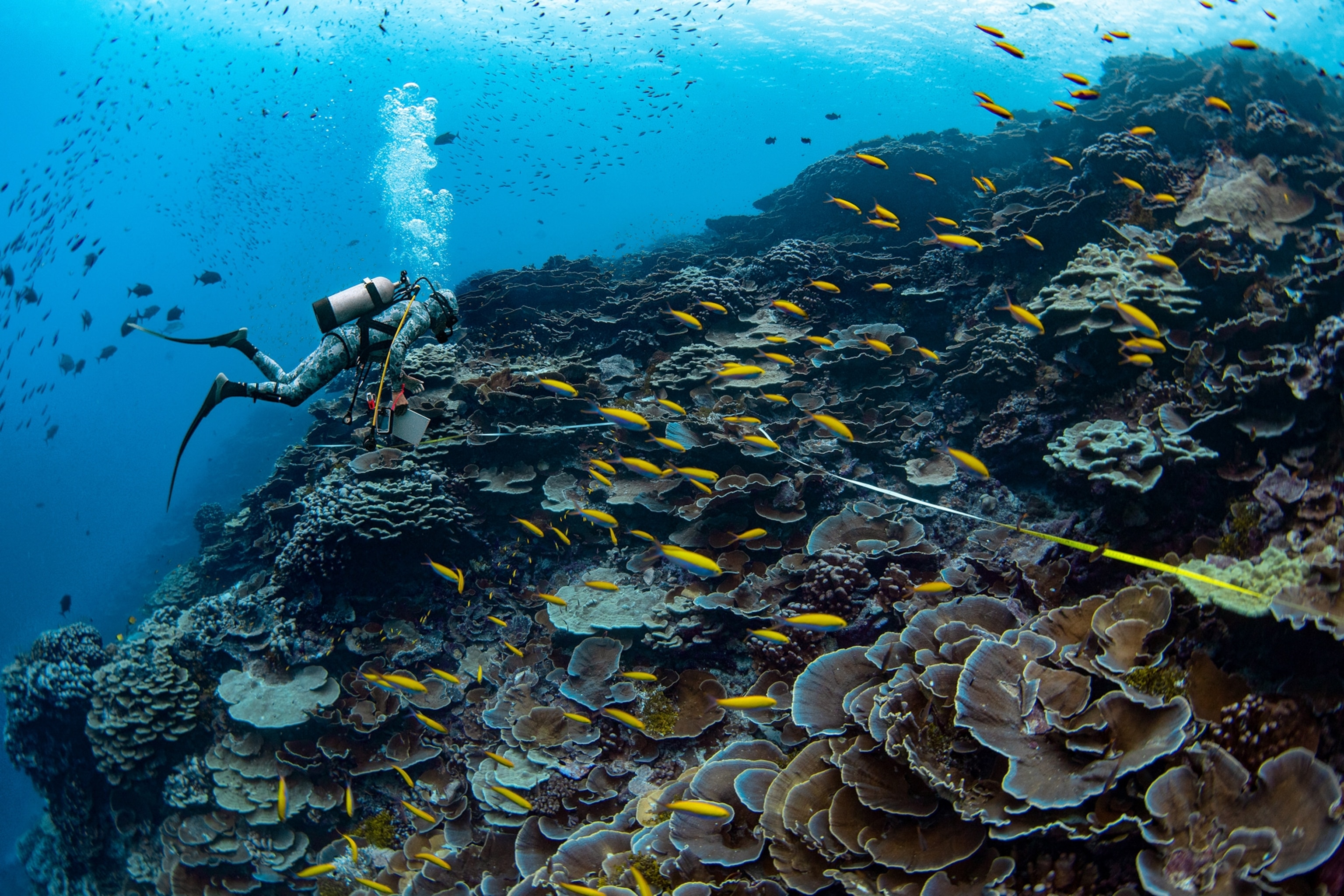
In many parts of the Caribbean, when corals die, their skeletons are rapidly overgrown by brown seaweed. But in Stuart’s photographs from the southern Line Islands, the coral skeletons were covered by crustose coralline algae, which form a pink limestone crust. When corals reproduce, their larvae drift in the water for days, weeks, or longer before they settle to the bottom and grow into a new coral colony. Their preferred substrate to settle on? Crustose coralline algae. They don’t grow on seaweed.
So the conditions were there for corals to come back in the southern Line Islands. But would they? There was only one way to find out. We had to give the reefs time and return to survey them.
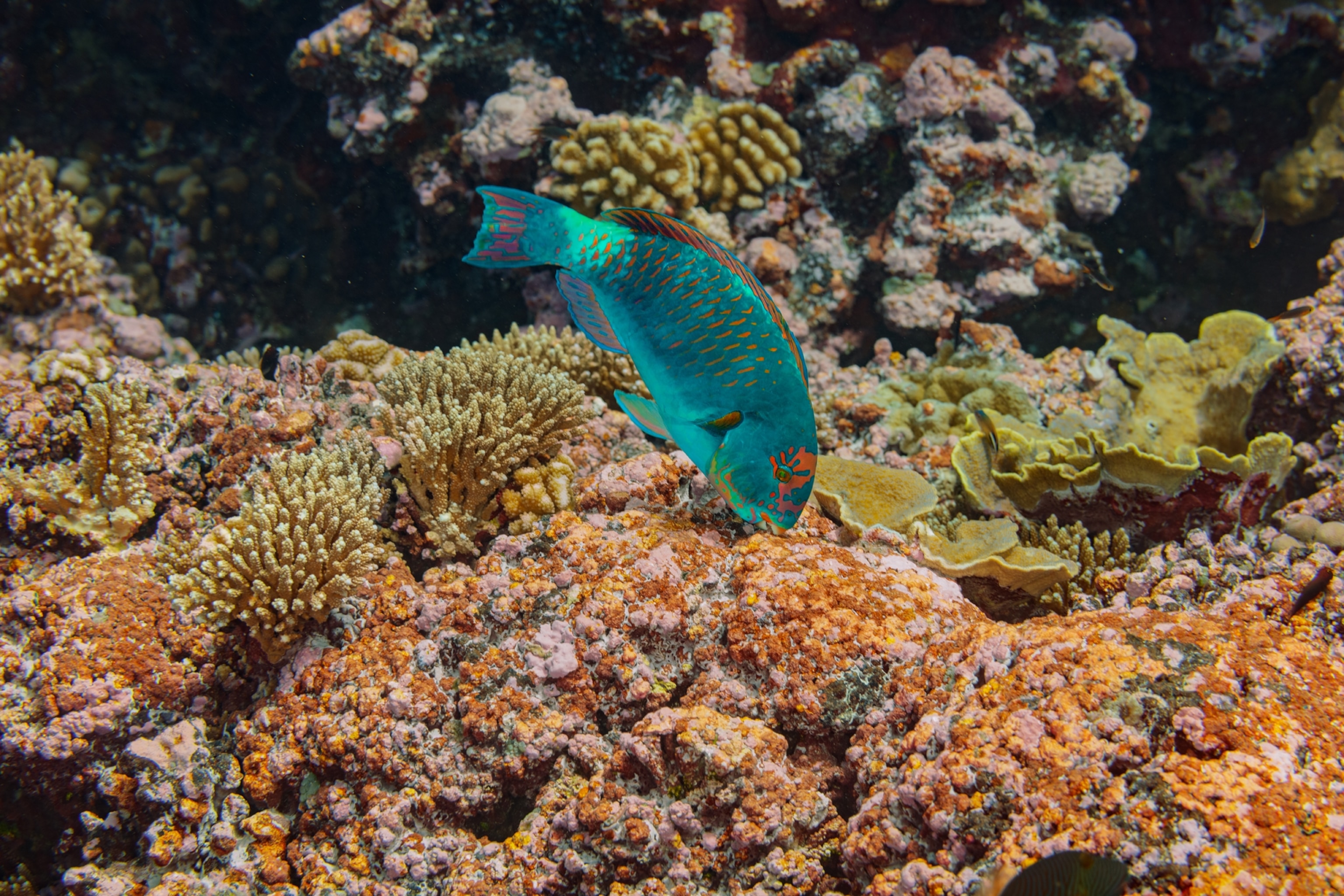
Last year we finally did, after waiting through two years of the COVID-19 pandemic. Two days north of Tahiti, our ship, Offshore Solution, reached Flint, the first of three islands we would visit. The old gang was back, 12 years older but with the same enthusiasm. On deck, we watched the breakers along the green island, our eyes glimmering with curiosity. I wanted to savor the moment, like an extraordinary meal you eat slowly, bite by bite. But I also wanted it all immediately. We put on wet suits, jumped in our inflatable launch, and raced to the reef.
In 2009 I’d been filled with excitement and adrenaline. Now I was terrified. Would the reef be a ghost? I grabbed my mask and plunged in.
When the bubbles cleared, I could not believe what I saw. Had anything ever happened to this reef? The bottom was covered with live, gorgeous corals, all the way down to 100 feet. I shouted at the top of my lungs, climbed back on the inflatable, and hugged my buddy, Pristine Seas cinematographer Manu San Félix. Both of us put on diving rebreathers and jumped in. We were back in paradise.
In three weeks of diving around the three southernmost Line Islands—Flint, Vostok, and Millennium (Caroline) Atoll—we measured spectacular coral recovery everywhere. The reefs were back with exuberance, but they were changed. Here and there, Pocillopora that had died in 2015-16 were recovering slowly, sometimes on top of their dead, like trees sprouting from stumps in a coppiced forest. But most of the space left by the dead corals had been filled by other species.
The above-water part of Vostok Island is so tiny that it would fit 14 times into New York City’s Central Park. The coral reef extends outward around the island, creating a relatively shallow platform on its leeward side that can be seen in satellite photographs. In 2009 that platform was populated by Pocillopora. We expected most of it to be covered now by coral skeletons, covered in turn by pink crustose coralline algae.
When I dived at Vostok, I thought my brain had short-circuited and I’d landed in wonderland. The reef was covered by light-blue corals that looked like giant roses—a garden of Montipora aequituberculata stretching as far as I could see. A closer look revealed dead Pocillopora, encrusted with coralline algae, under the Montipora.
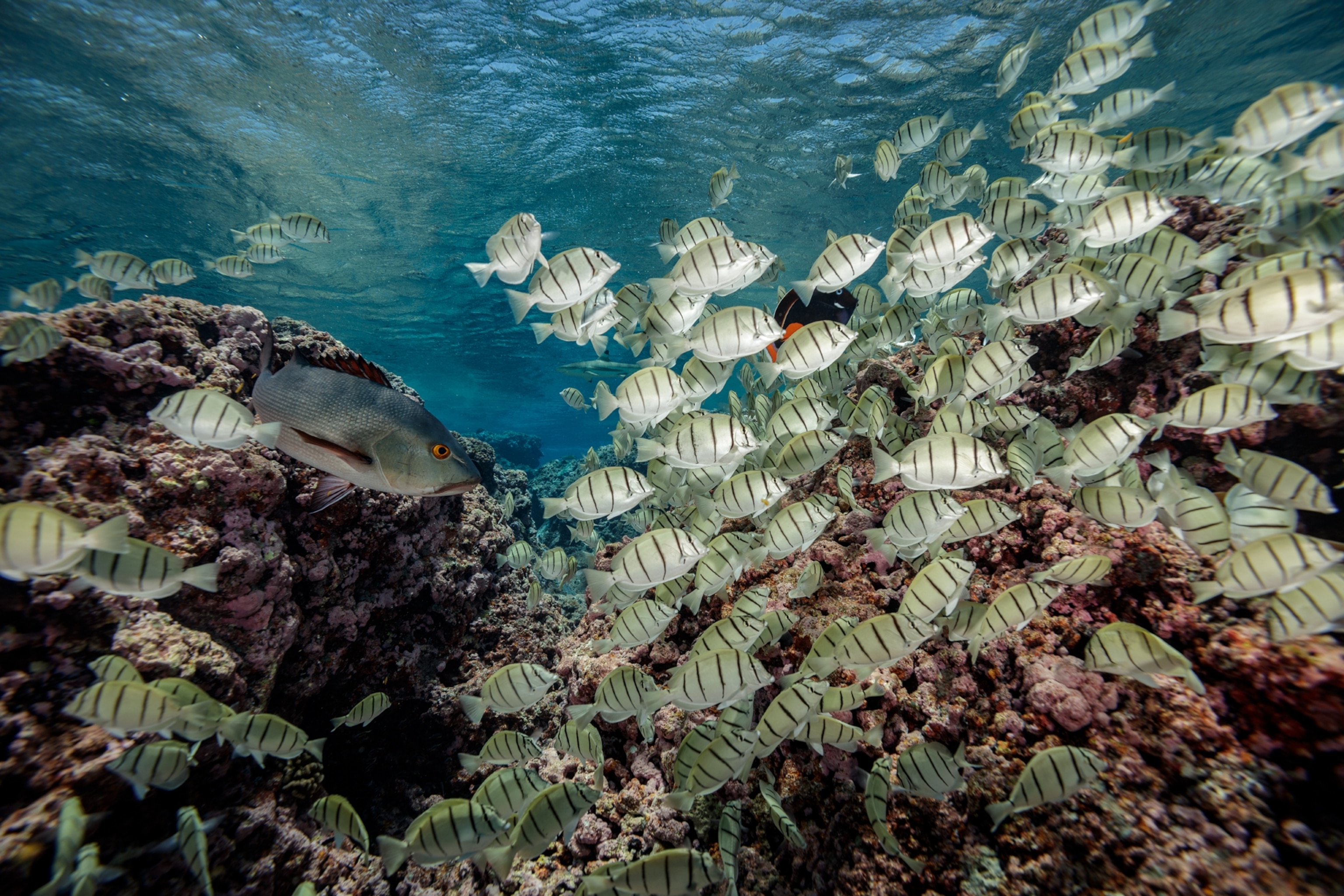
How could Montipora have covered the entire reef? How could it have gone from dead cauliflowers to thriving roses in only five years? Nobody was there watching—but we had a clue: The Montipora colonies were all about the same size. That suggests to me that corals elsewhere around Vostok had been reproducing sexually and releasing millions of eggs, which soon hatched and formed a massive cloud of larvae above the reef platform. A rain of Montipora larvae may have fallen and settled on the pink crust within a day—a single event that changed the seascape for years to come.
At Millennium Atoll—“atoll” meaning that it has a central lagoon—the biomass of fish and the abundance of sharks were even larger. The dead corals had been overgrown by several species, notably branching Acropora.


The only bad news was that the giant clams that formed multicolor pavements in some areas of the Millennium lagoon were dead. In 2009 we had counted more than 29 giant clams per square yard in those areas; in 2021 three hours of swimming over the lagoon reefs revealed only five living clams. The seawater temperature in 2015-16 probably had been much higher in the lagoon than in the fore reef around the atoll. That created a lethal clam bake, from which the giant clams may never recover.
But the coral recovery amazed us all. No one on our science team had seen anything like it. Our coral specialist, Eric Brown, a U.S. National Park Service marine ecologist, estimated the Millennium lagoon had, on average, around 43 million to 53 million coral colonies per square mile—a shocking number. We had to go through the calculation several times to believe it. It was a reminder that coral reefs do a much better job restoring themselves than any human interventions can—so long as there are enough living corals around to replenish the reefs.


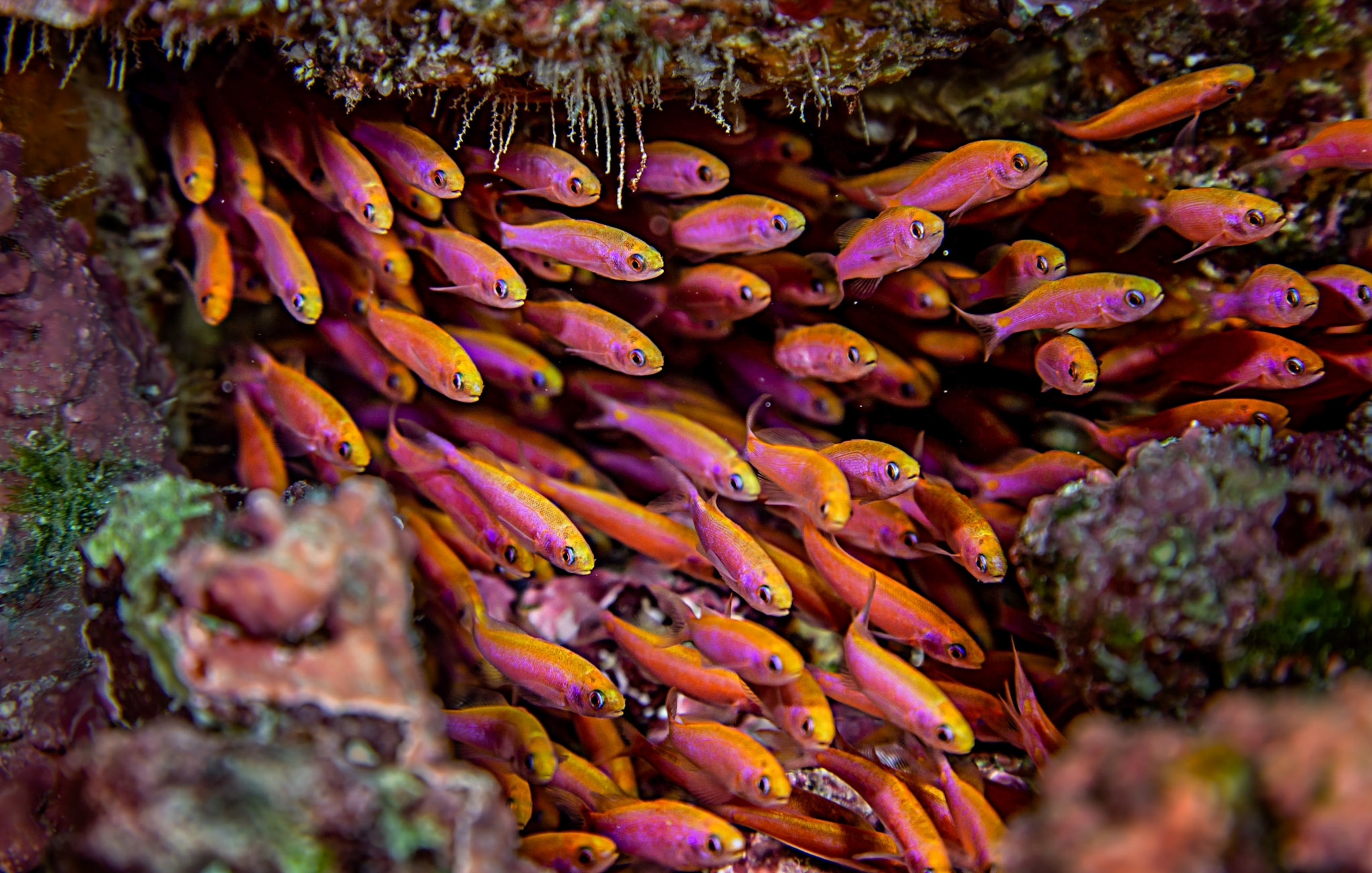
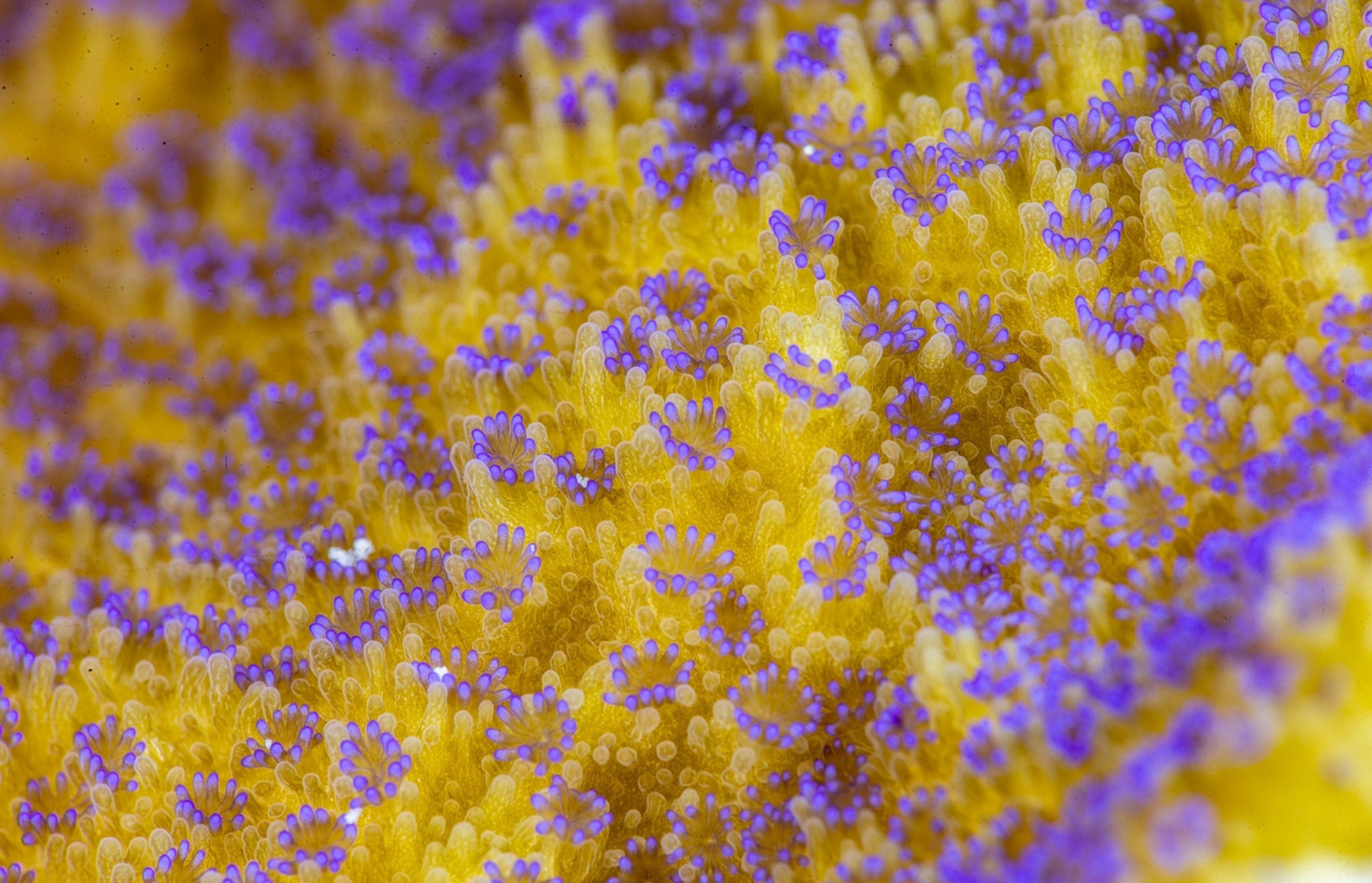
What did we learn from the recovery of these “super reefs”? The corals that were resistant to the phenomenal 2015-16 El Niño provided the reefs’ resilience. The southern Line Islands lie in one of the hottest hot spots of warming in the Pacific Ocean, so the corals here apparently have adapted to heat.
For new corals to grow over dead ones, though, the skeletons need to be covered by pink encrusting corallines instead of fleshy seaweed. What provided these ideal conditions in the southern Line Islands? We believe one reason is the off-the-charts abundance of herbivorous fish—the enormous parrotfish and schools of hundreds of surgeonfish. They’re grazers, the zebras and antelope of the reef, and they gobble every tiny fleshy alga that dares to grow on the dead coral. When you’re diving in the shallows, you hear those fish scraping at the reef nonstop. Crustose coralline algae, which have calcareous skeletons, survive the grazing. The fish prefer to eat the equivalent of yummy lettuce rather than limestone.
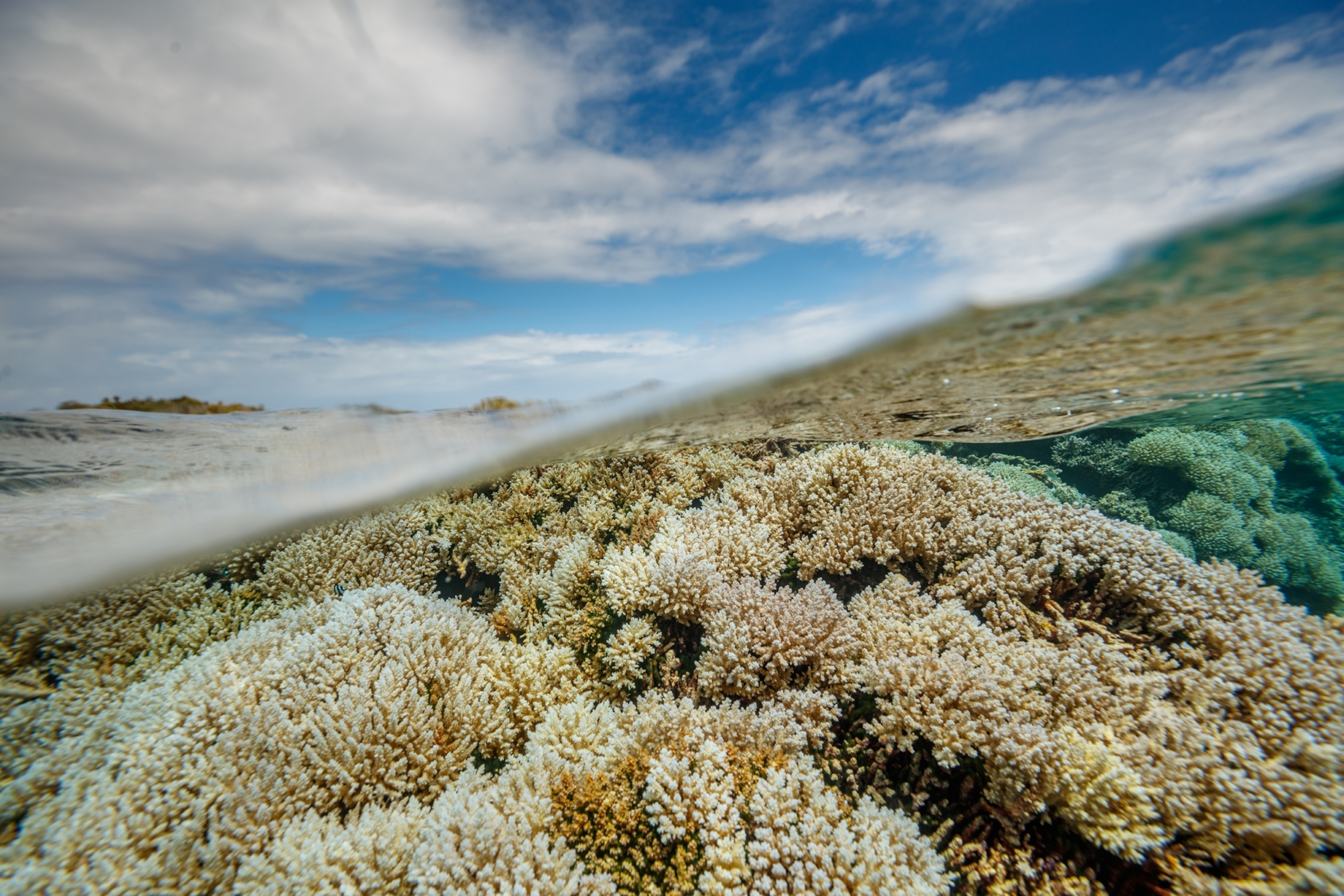
That observation reinforces the conclusion we reached in 2009: Full protection from fishing, and the enormous fish biomass it yields, is necessary for a reef to be able to bounce back. Full protection promotes resilience. But will it be sufficient if extraordinary warming events like the 2015-16 El Niño become more frequent? Will these reefs have enough time to recover in between crises? We don’t know.
Coral reefs harbor more biodiversity than any other ocean ecosystem, provide food security for millions of people, and protect our shores from devastating tropical storms. If we are to preserve them and all the benefits they provide, we need to give them space. As the world tries to agree on how to reduce carbon pollution, we can buy time by protecting reefs and fostering their strength. The difference between a dead reef and a super reef lies in how much we care.
This story appears in the November 2022 issue of National Geographic magazine.
The National Geographic Society is committed to illuminating and protecting the wonder of our world. Learn more about the Society’s support of its Explorers.

